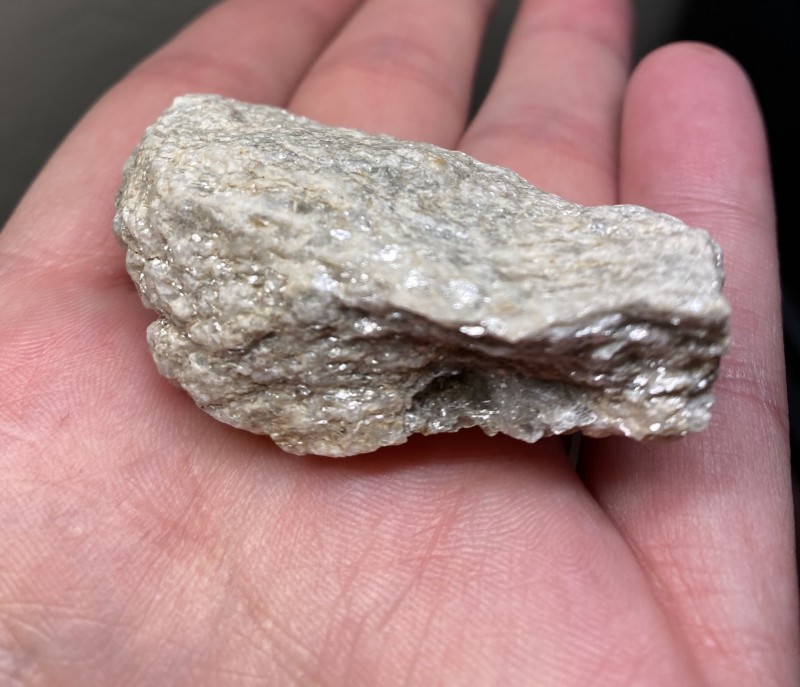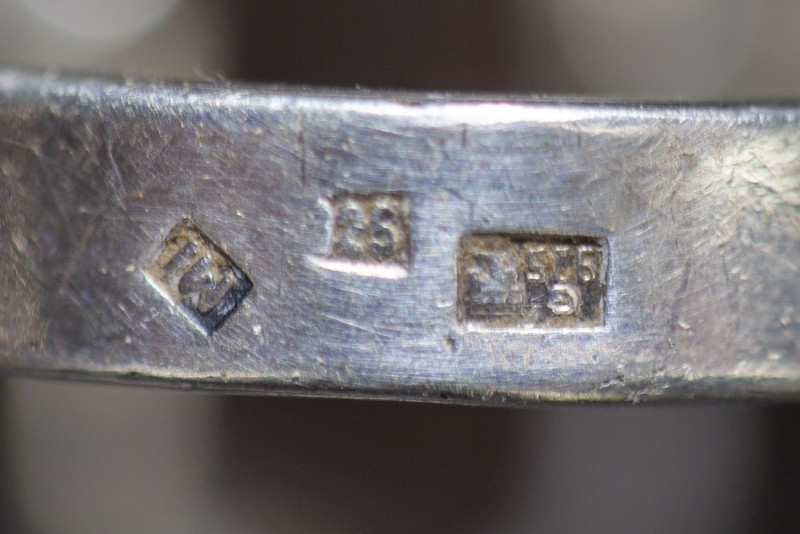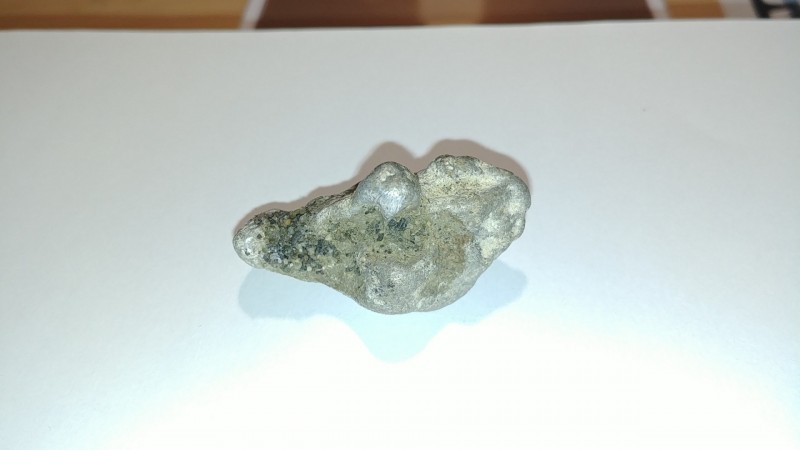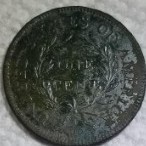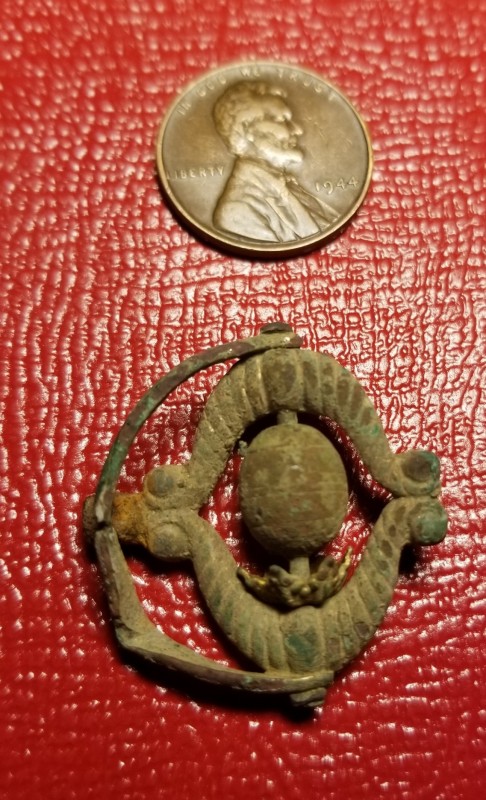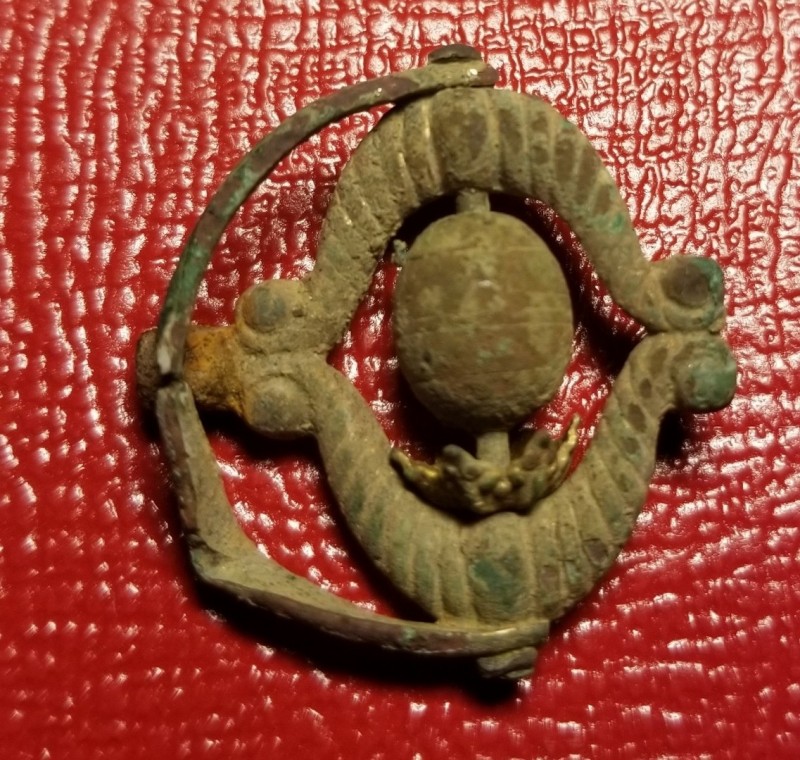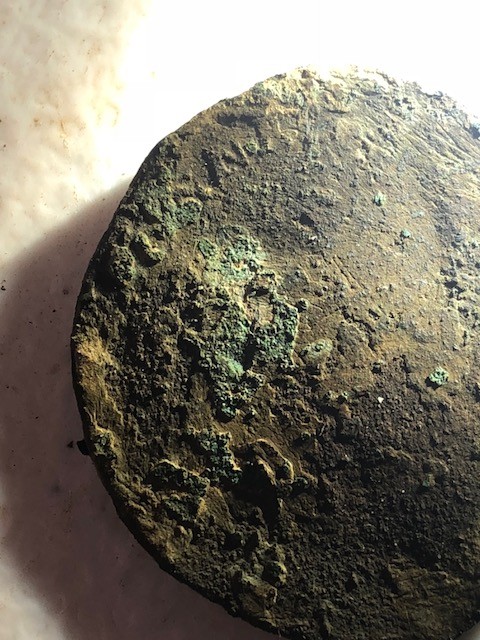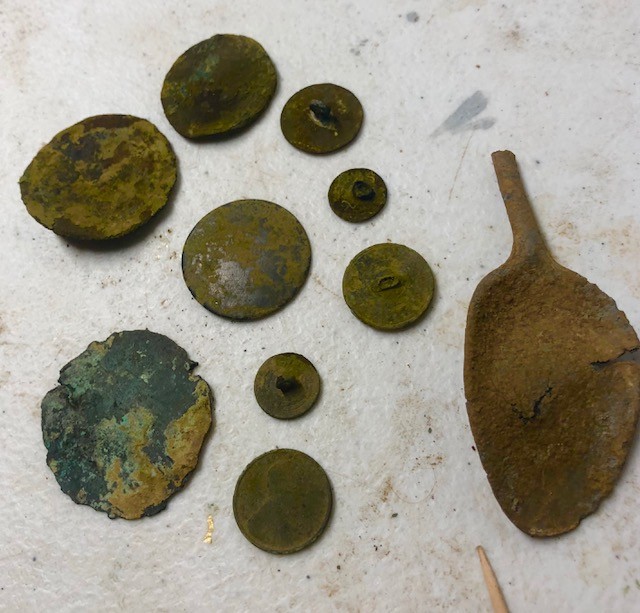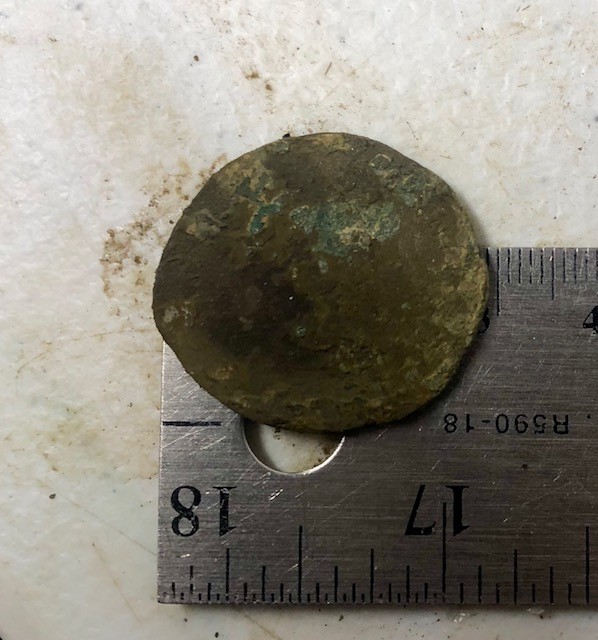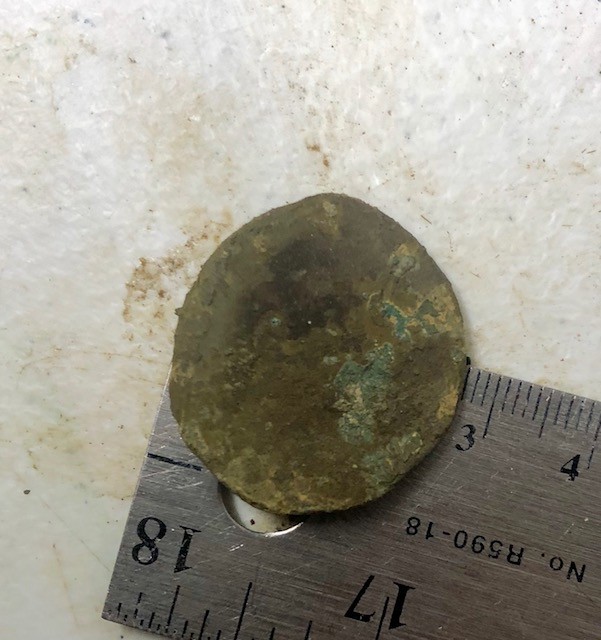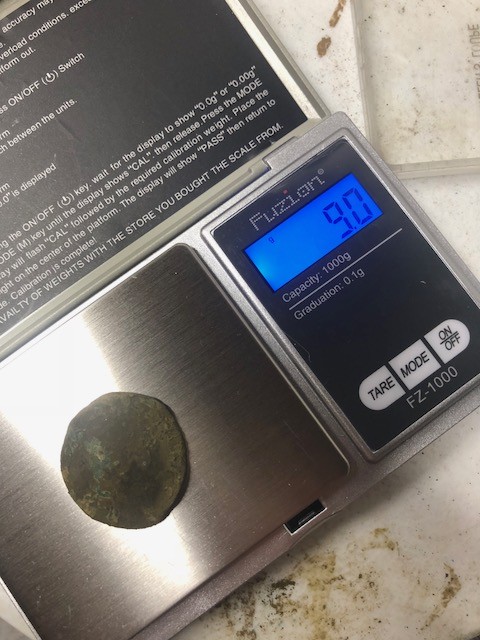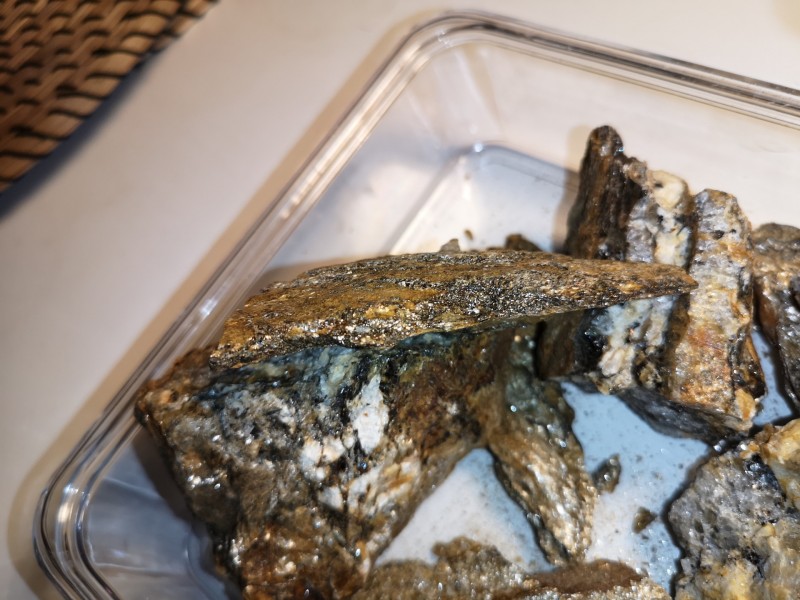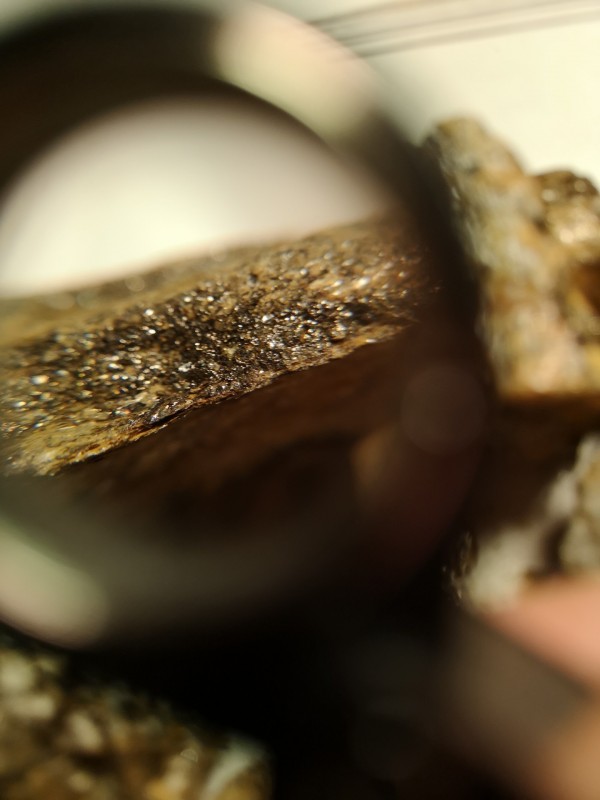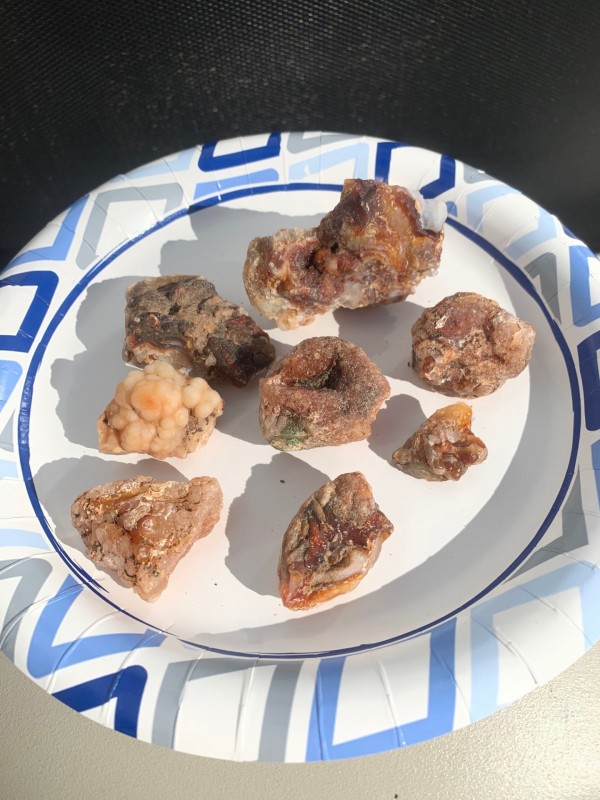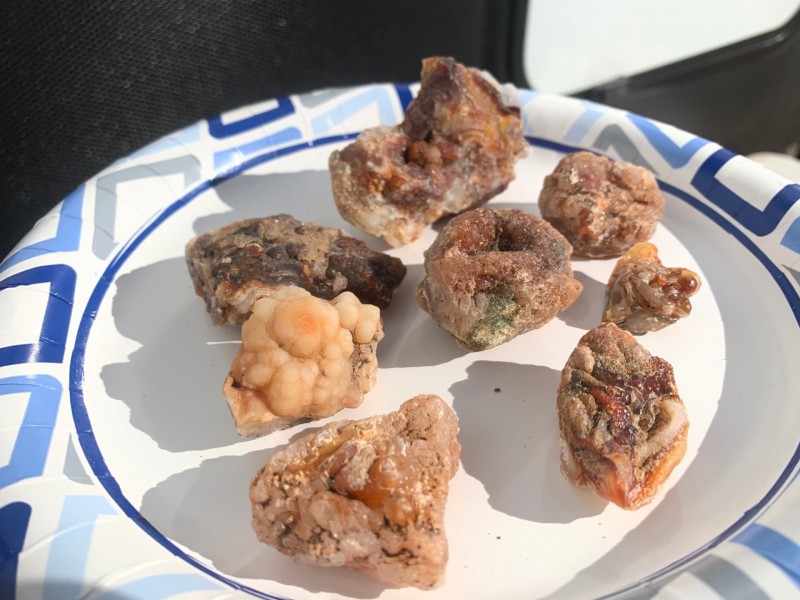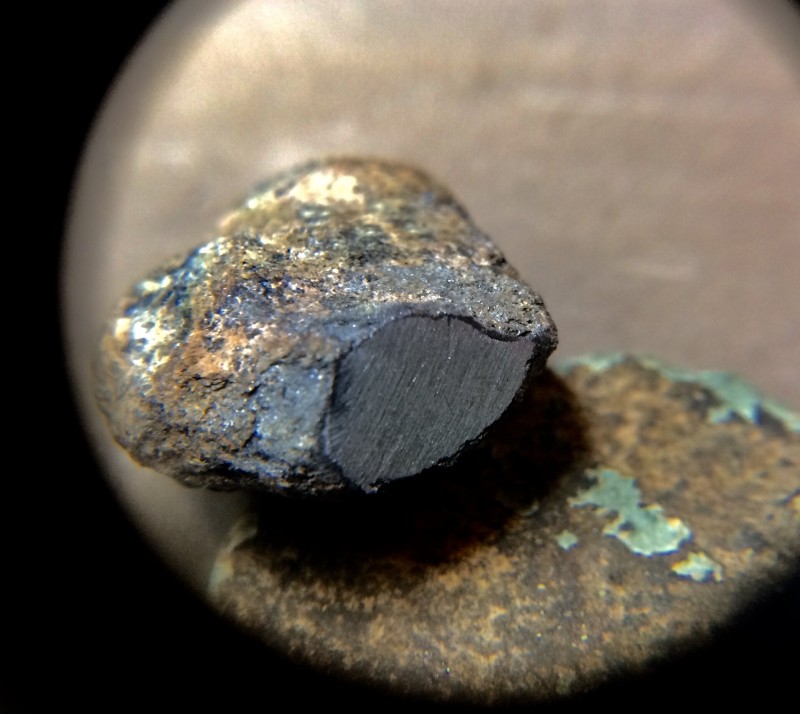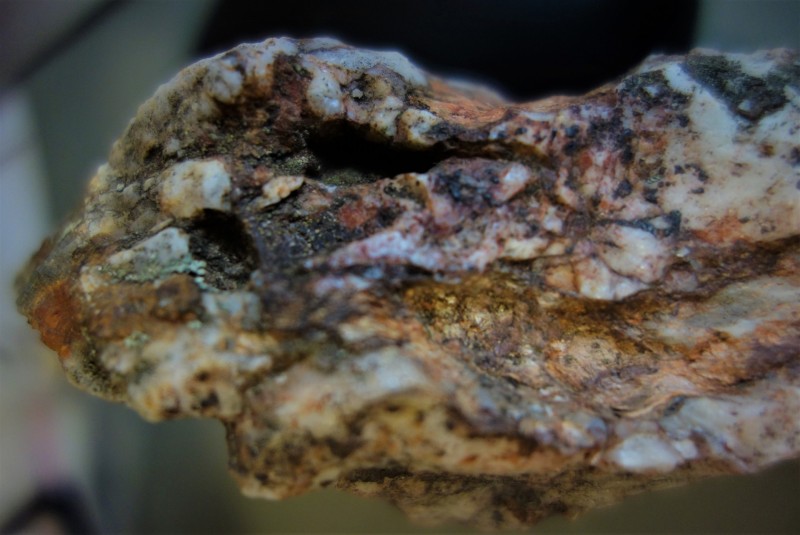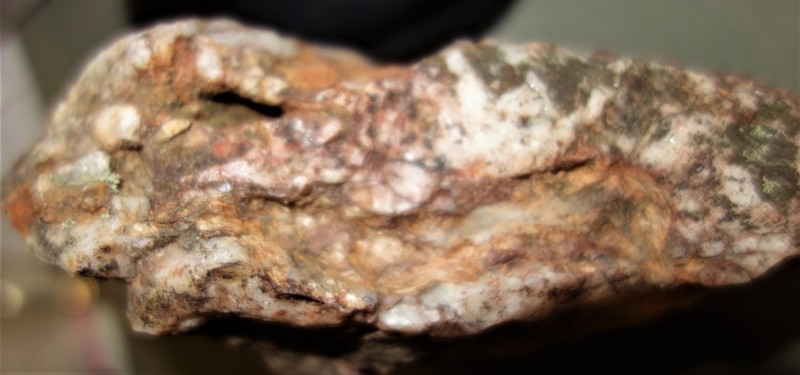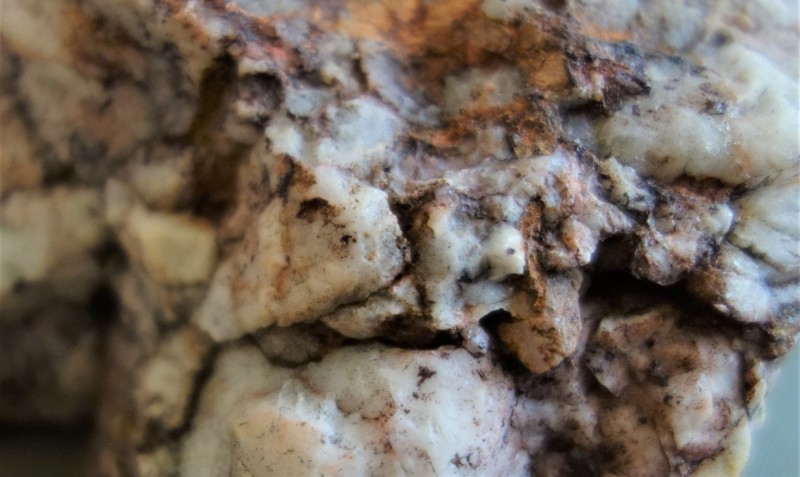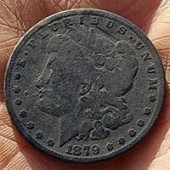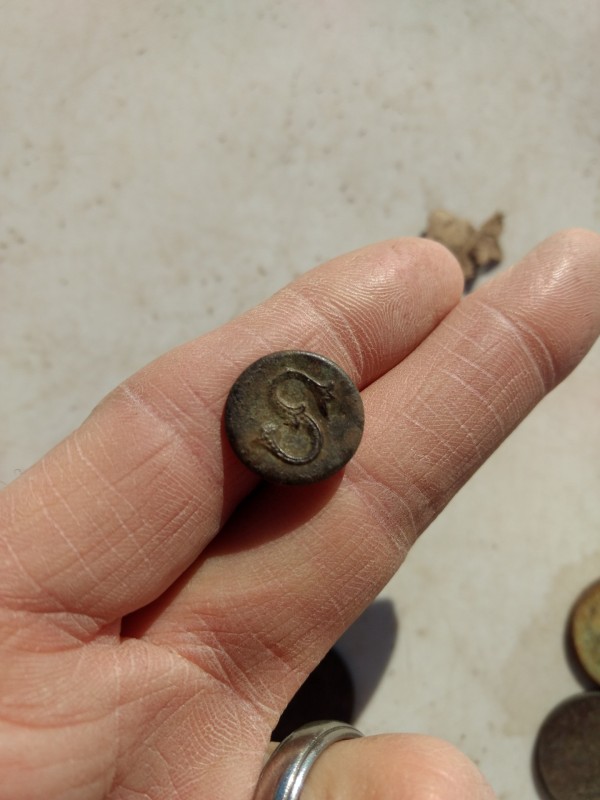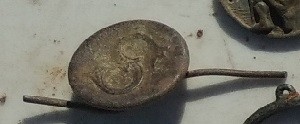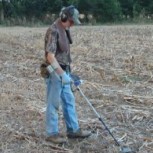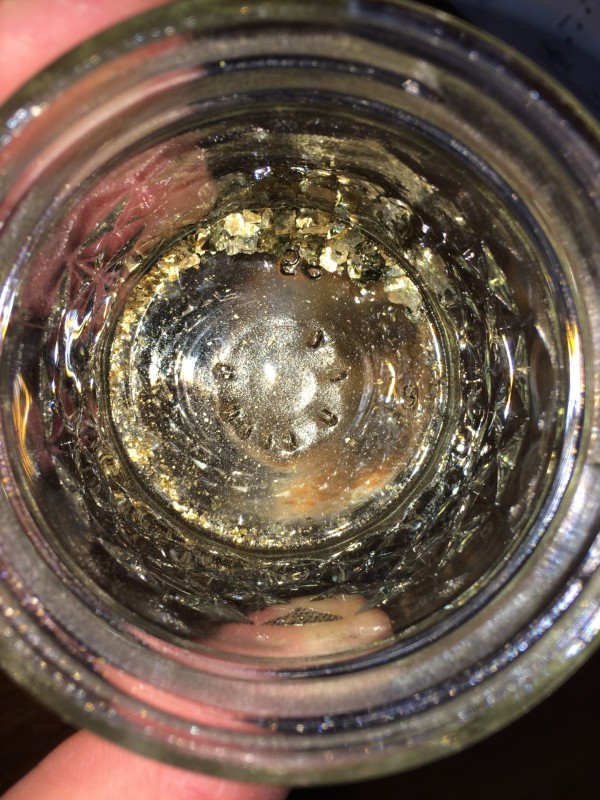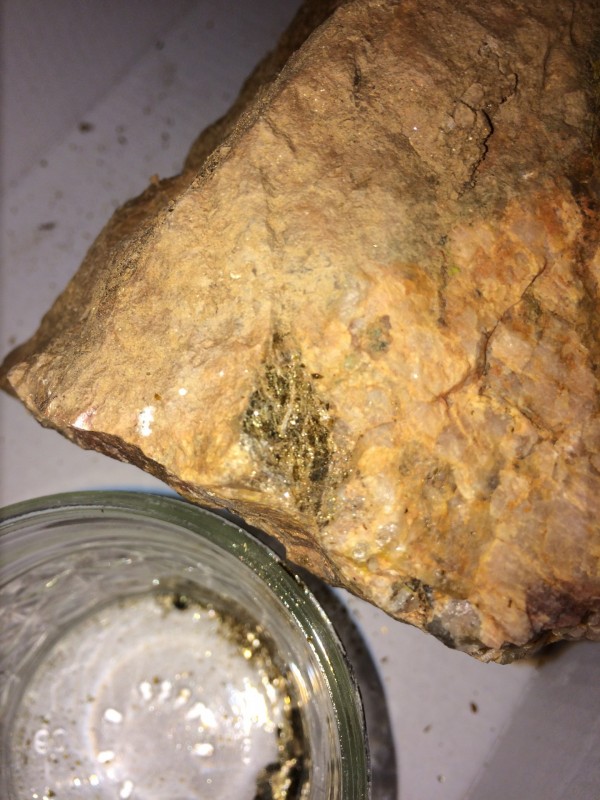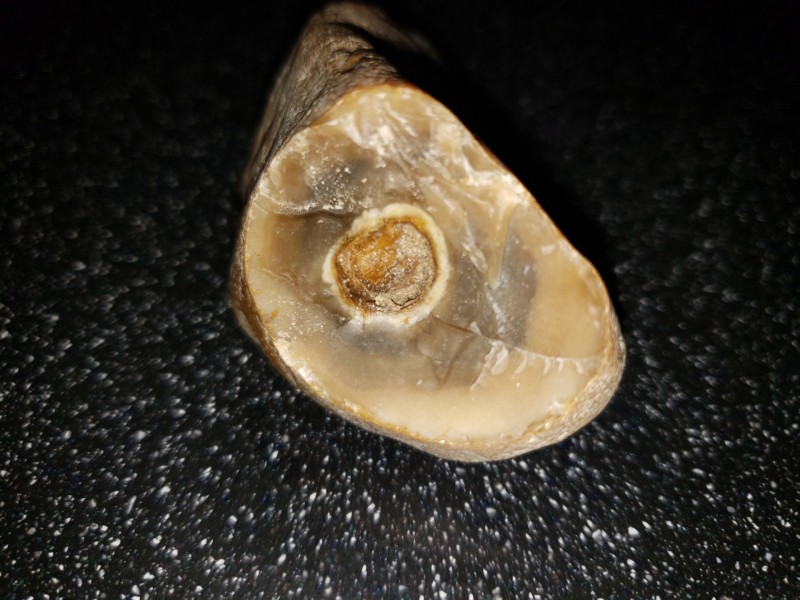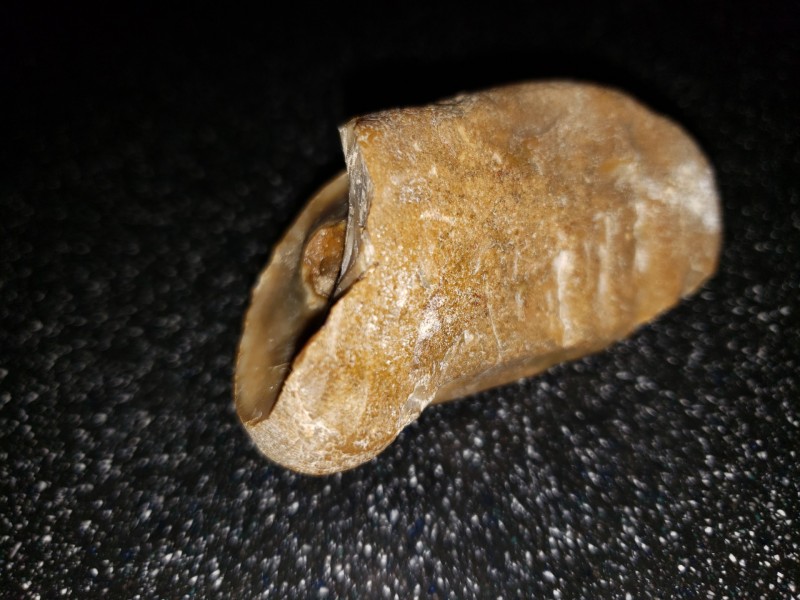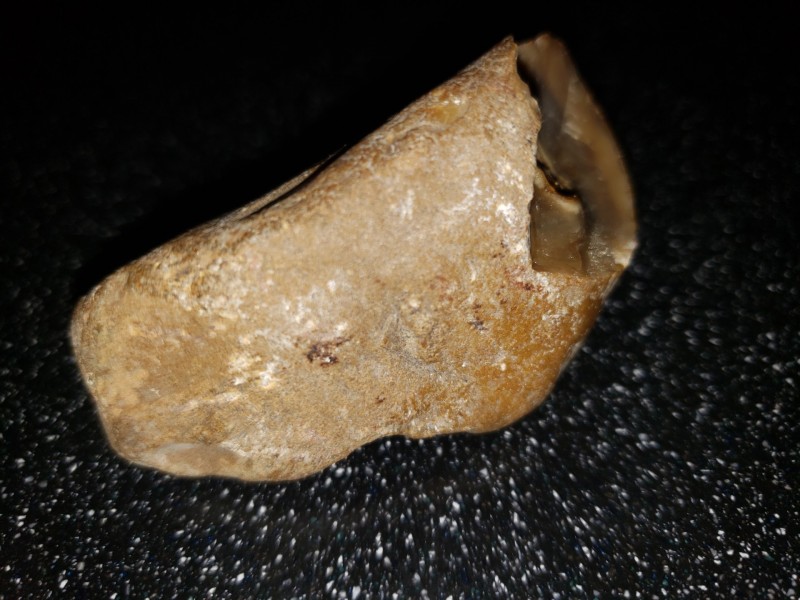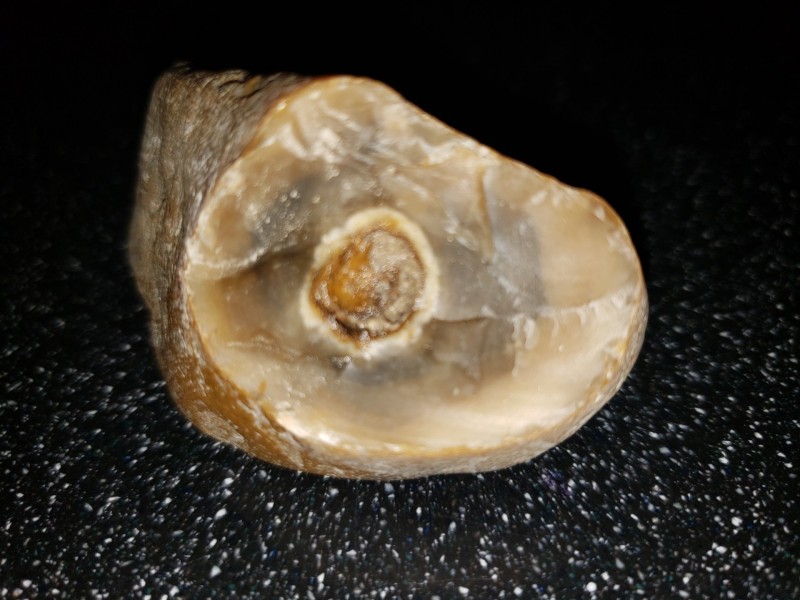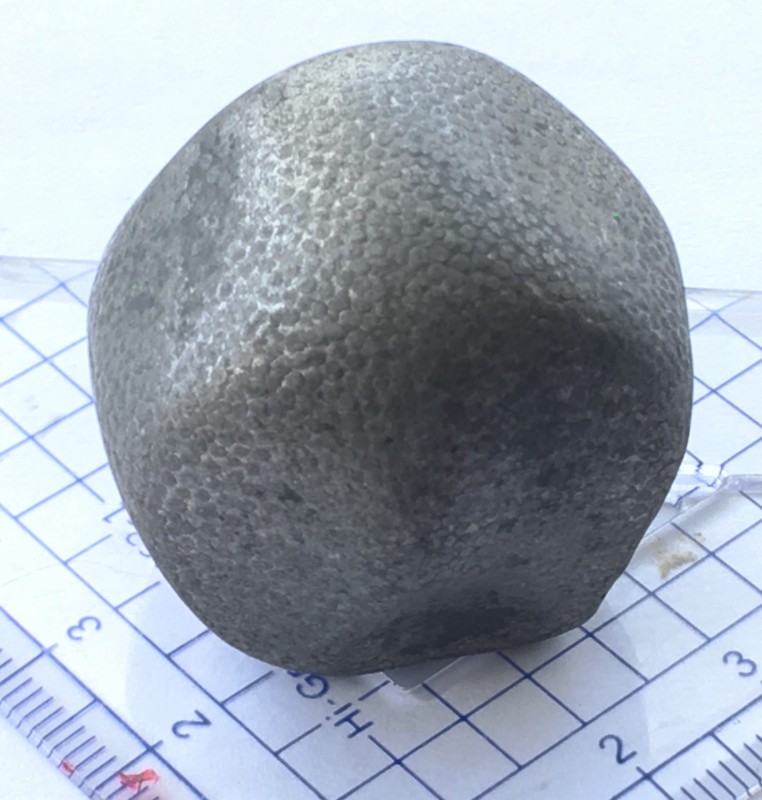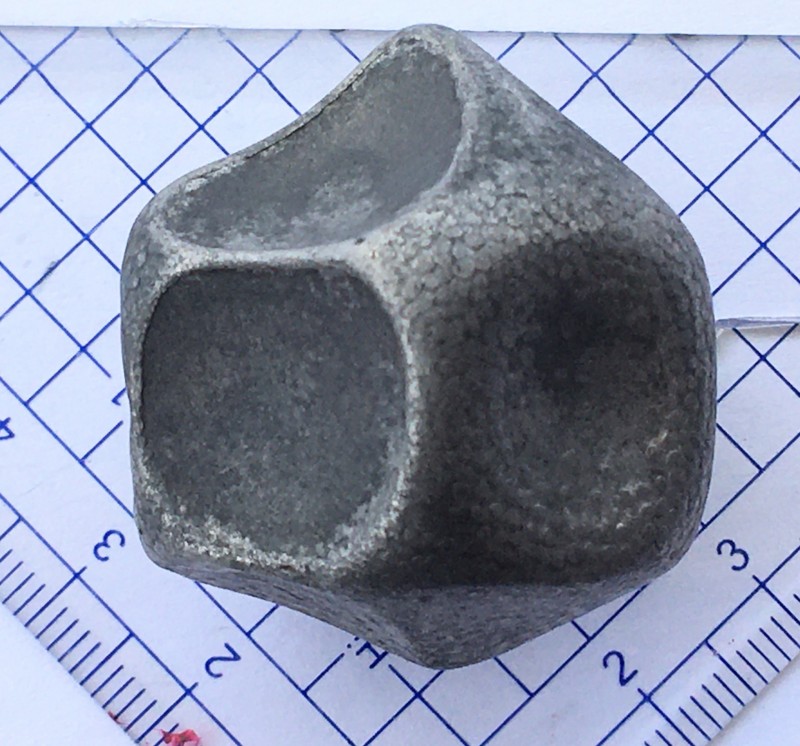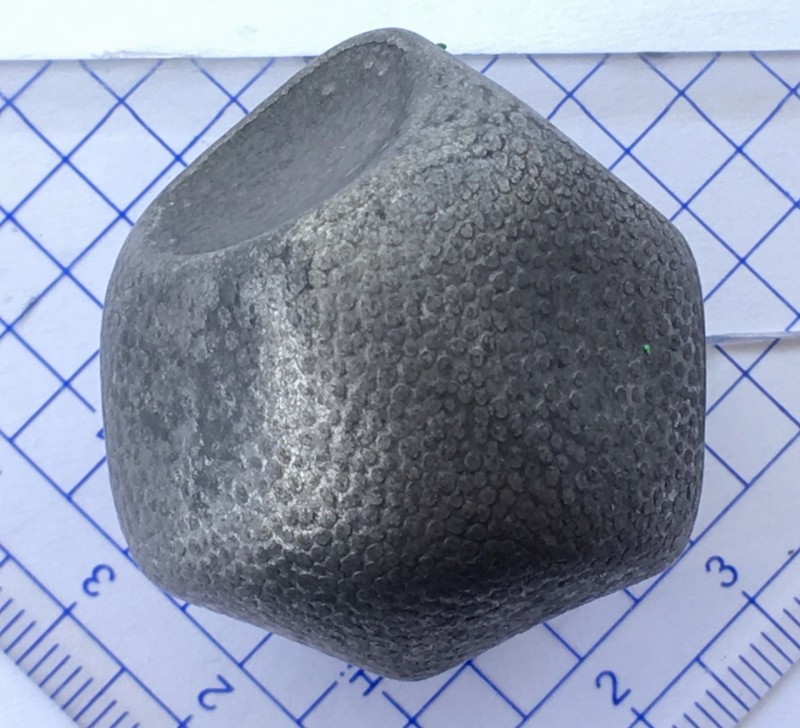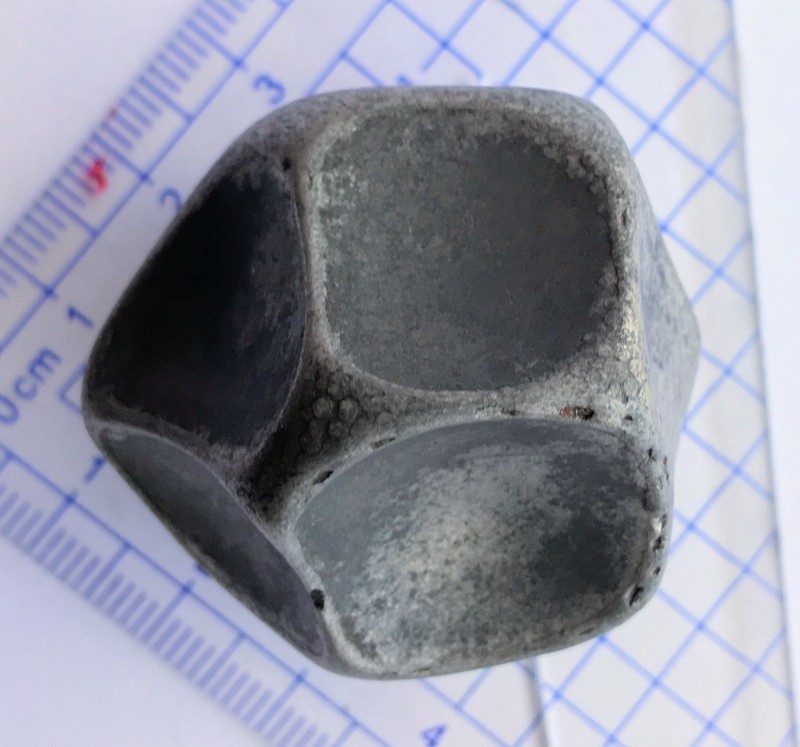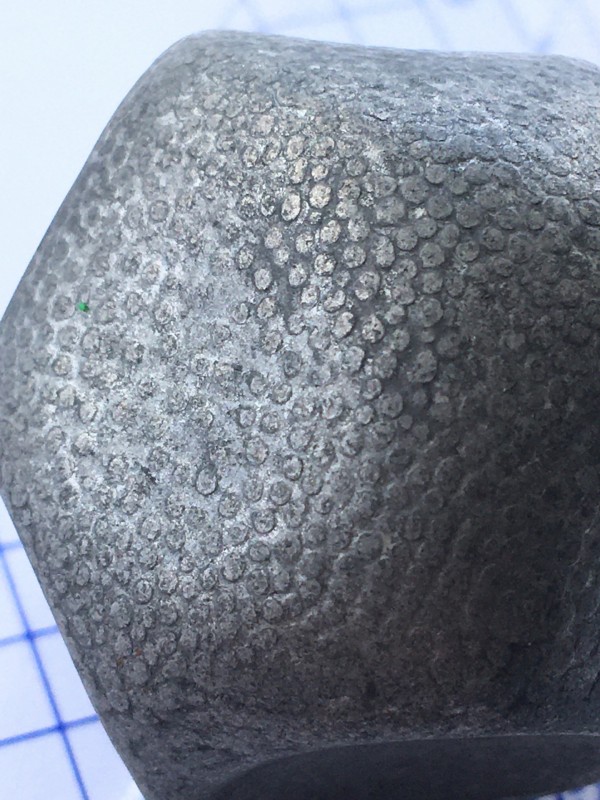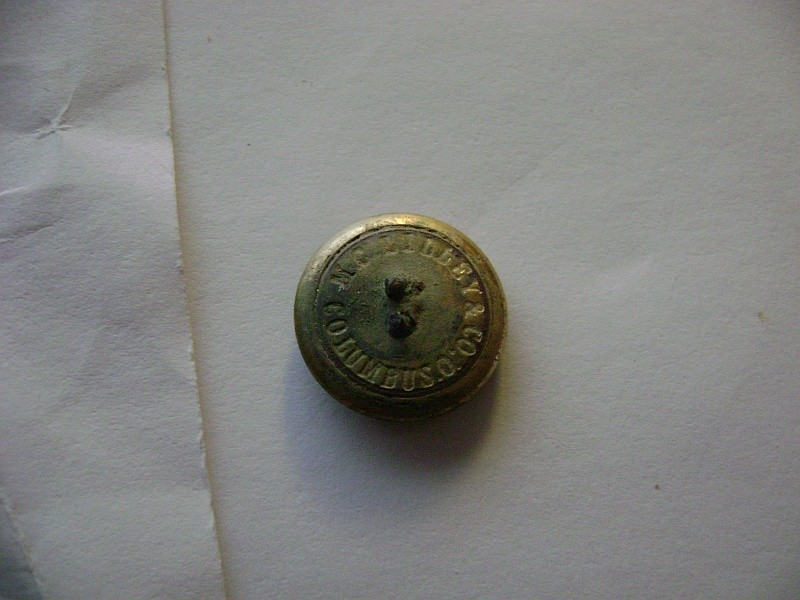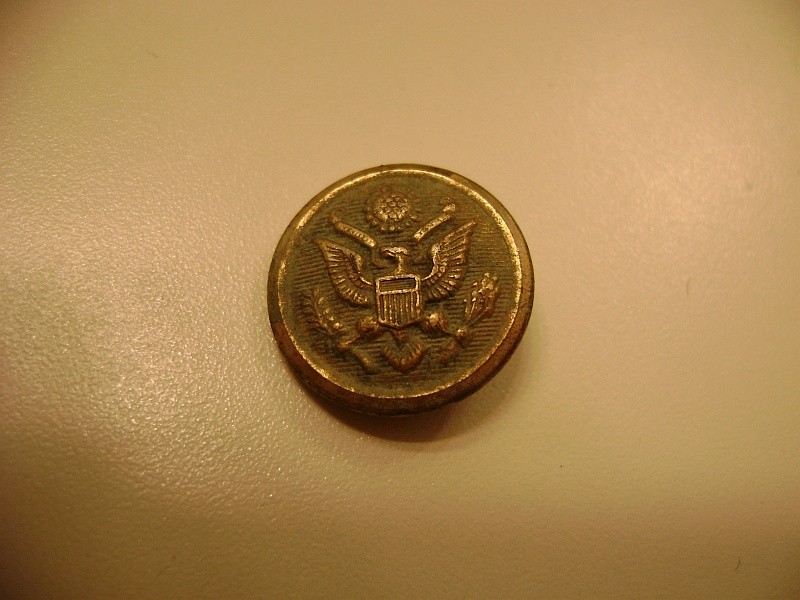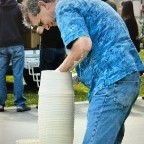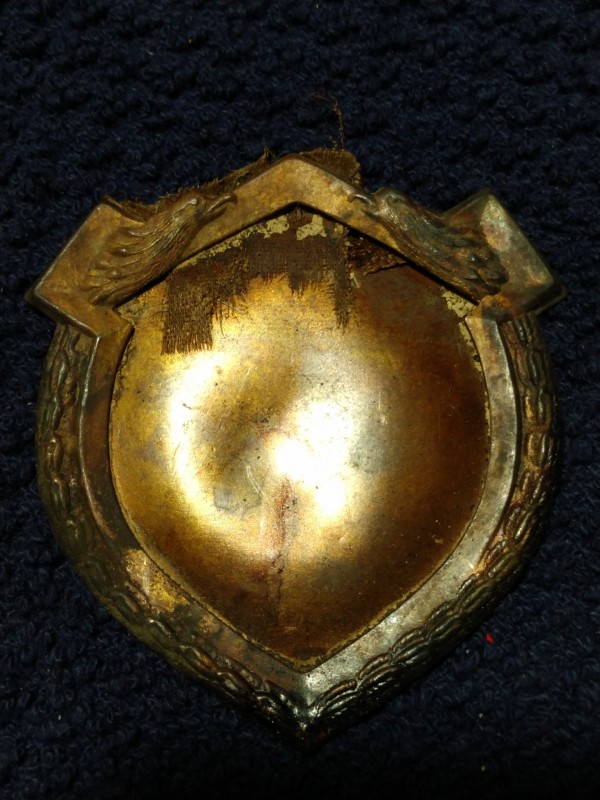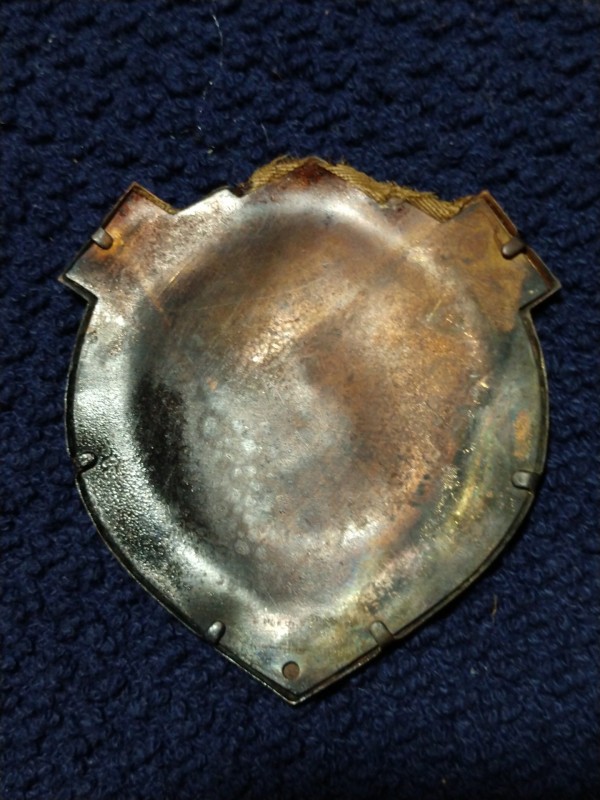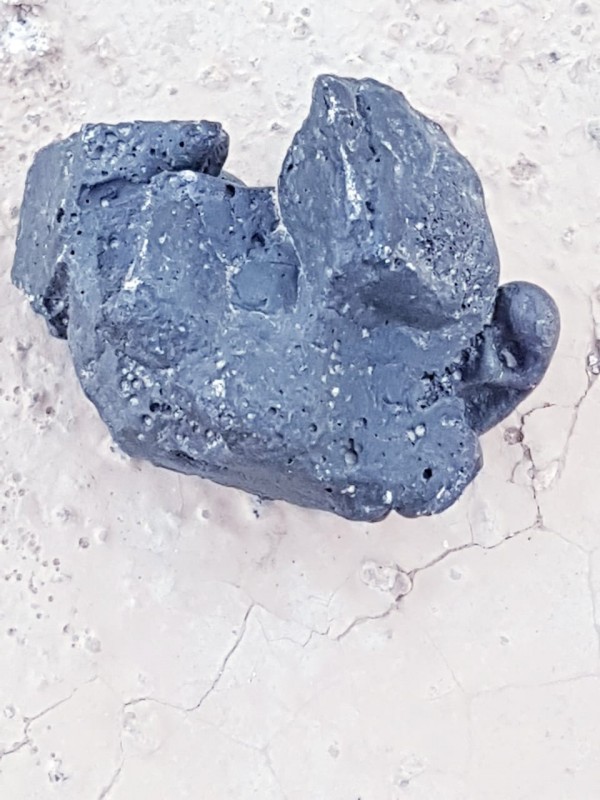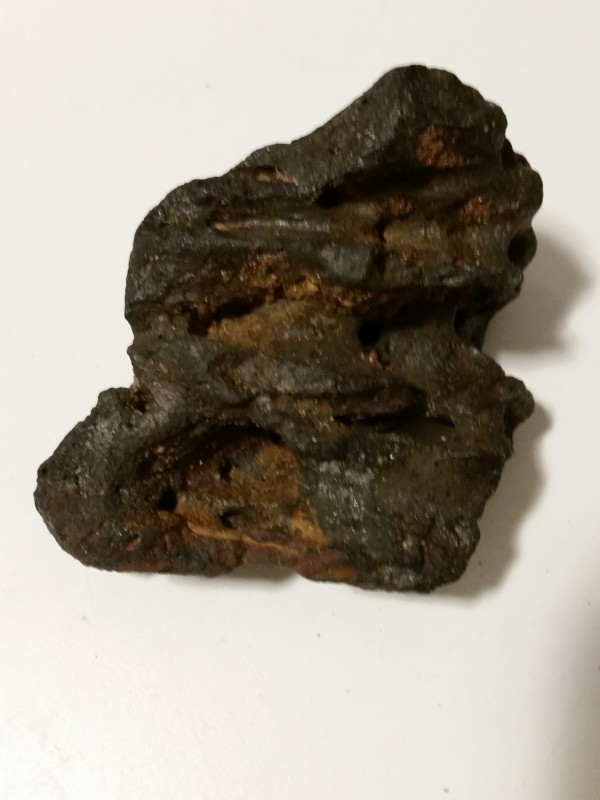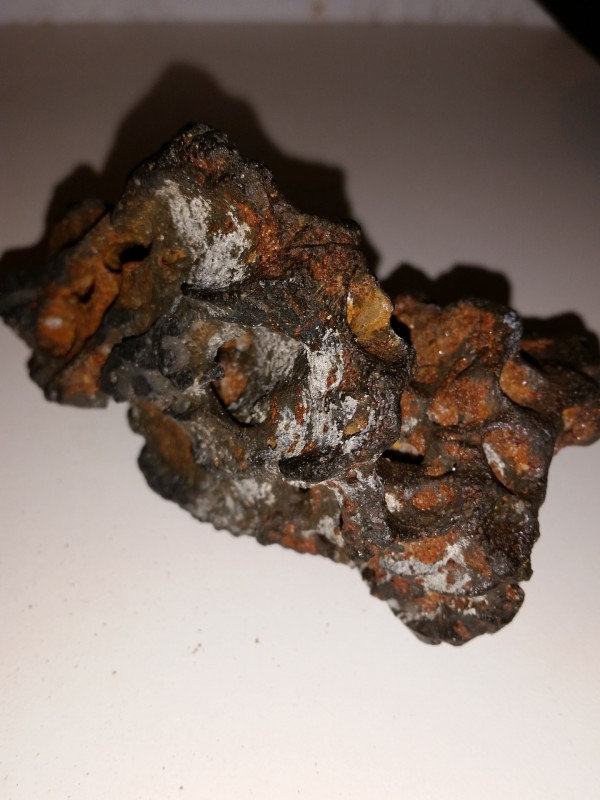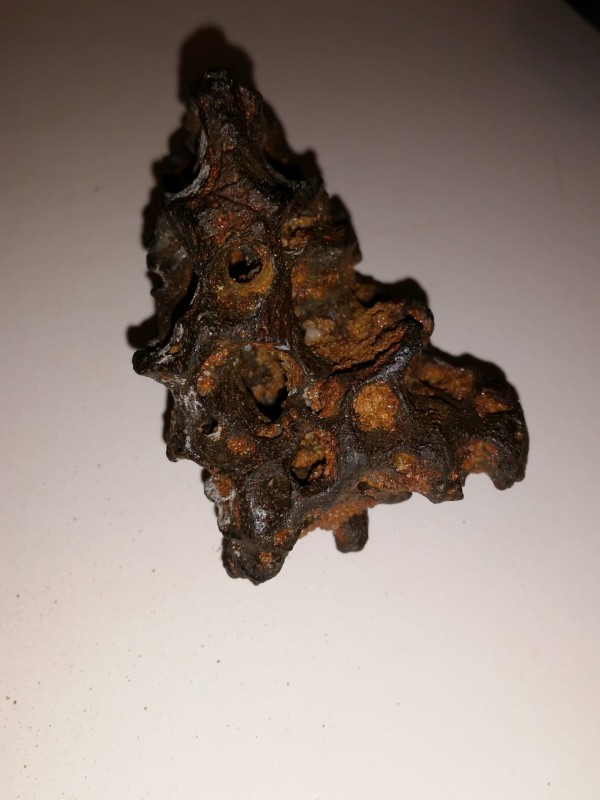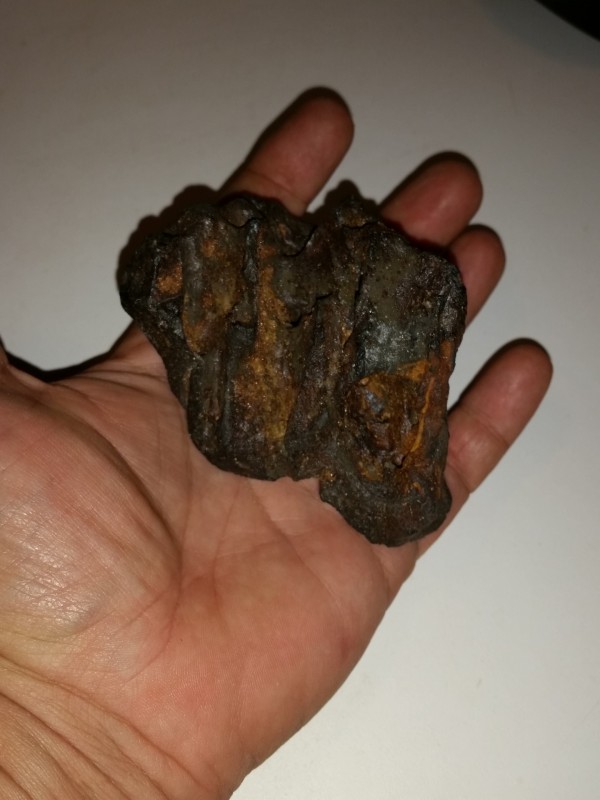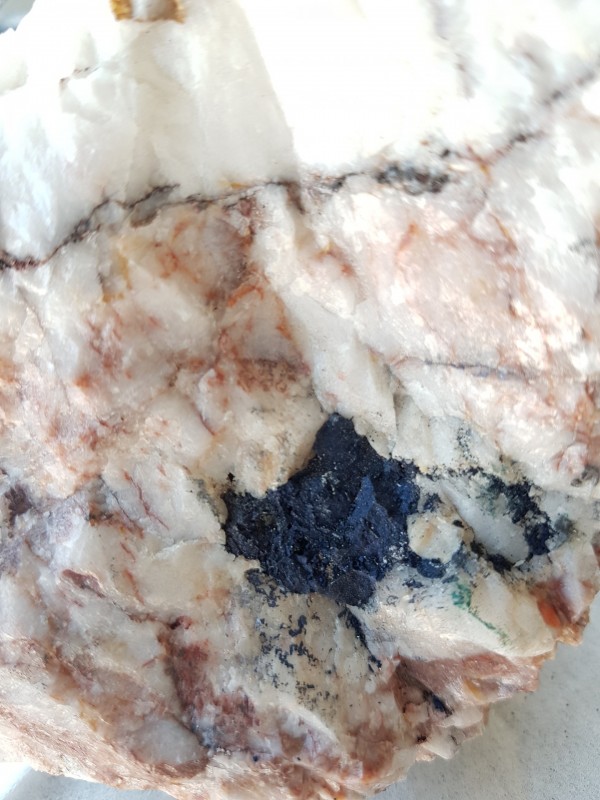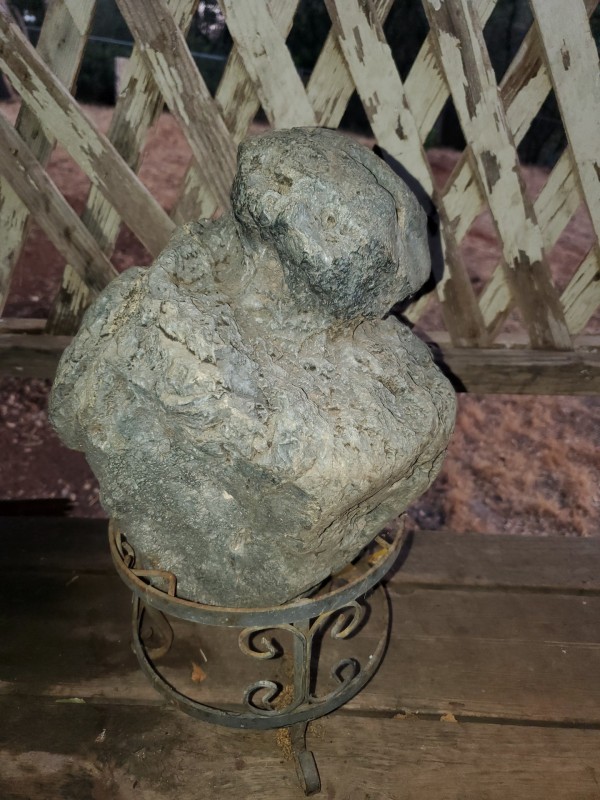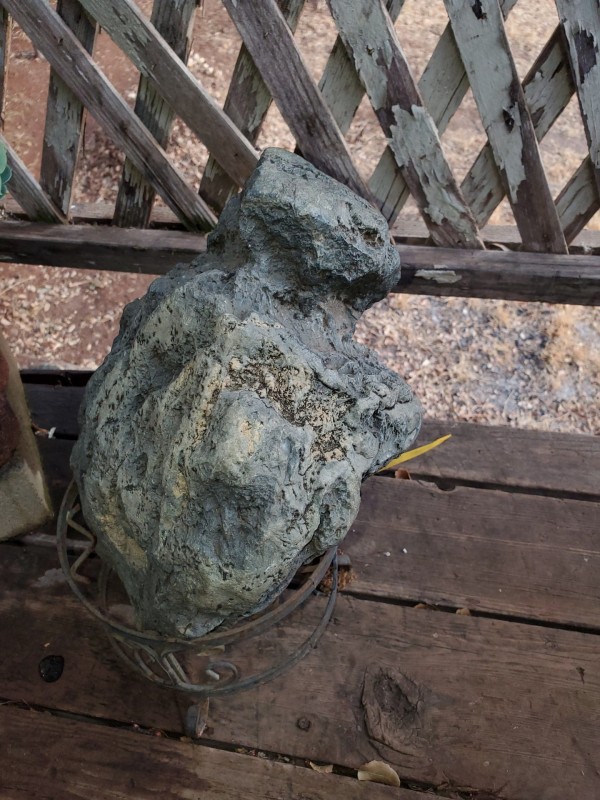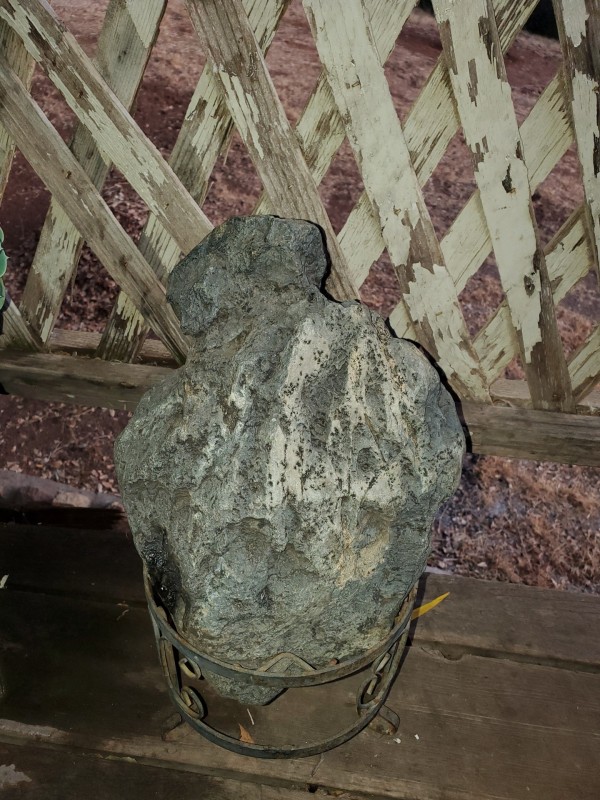Search the Community
Showing results for tags 'id help'.
-
Hey everyone, i'm curious to what this ore (rock) is. It's whitish/grey with some silver tones all over it, it glistens in the sun pretty amazingly and seems to be made of sheets of maybe silicone? it breaks pretty easily.
-
I found this ring with amber stone while detecting in a park a couple weeks ago. The park was established in the early to mid 1950's, and previously it was a pasture. I certainly don't know when this was dropped but I think it may be old. It was only about 3 inches deep, but other targets in the general area (e.g. bullet casings) indicated that area had not been re-landscaped, likely ever. Sorry for my poor photography -- the red background I chose has polluted the color of the ring. A friend with a high quality camera shot some photos of the hallmarks, which were actually on the outside surface of the ring -- not where I'm used to finding markings. Because the ring surface isn't flat, you can see that the middle mark is out of focus, but I think it is simply '925' with the numeral 9 not having been stamped well. I think the left mark is either 'MI' or 'IW'. The rightmost mark is the most interesting. This one is actually upside down in the photo. Again there is a '925' but the other two inscriptions are what I'm especially curious about. Can anyone help with either the 'MI'/'IW' mark or the multi-icon RH mark?
-
Hi, I found the attached metal object with my MXT today. I am having trouble identifying the metal. It is not lead, it is hard, it is roughly 1 inch by 1/2 inch in size and weighs 18grams, it does not feel light enough for Aluminium, any help identifying would be great ... (hopefully thinking Platinum ..) Is there any test I can do? Cheers, Bernie
-
Howdy folks, A friend of mine is putting an addition on his house, built originally circa 1750s. I spent some time working on the dig pile from the foundation work. I have found very little other than nails. One old drawer knob, and this little item. It is a nice brass item with gold plate...still a little of the gold plate hanging on in spots, so I really don't want to clean it much. The little egg shaped item does spin freely on the post, as does the little skinny thing, which I will call a leaf. That has the most remaining plating on it. So far, searches have brought up nothing similar, but so far the best guess from a friend is a pocket watch fob. Any other ideas? I think the handle part used to swing freely, and it has a small hole in it, smaller diameter than the iron rust colored part it is touching at this point. I was using the VGG with super six coil...it really does have awesome audio in a mess of nails. Thanks for looking.
-
The coin is badly burnt by NE acid soil, and the coin has gone may rounds in the ring with the ploughfound in southern CT with flat and dandy buttonsI can just make out what I think is “N N• R”. maybe the first N is something else, or the R is an E or an A, and the • dot is an acid blisterno other detail showingIts roughy the size of a george II hapenny, but letter are much smaller than on a HapennyVery heavy and thick 2mmbut egg shaped 26mm x 30mm
-
I came across some rustbrown colored mica schist and decided to scan it with my Garret At gold with a double D coil. I'm im all metal mode, ground balanced and the detector starts to give me a lot of targets with 60-80 on the scale(thick gold/precious metal). Iron is below 30-50. I hammered out the rock that was giving me the high reading and it turns ut there is thick layers of some dissiminated metallic (?) layer in the schist. Is have had a closer look and it does not look like pyrite because it is quite dark gray, but still has the metallic shine. It is brittle, so not sure if it is metall or sulfide. I heard several people say that sulfides do not give a reading on a metal detector. To confirm that i have testes a big chalcopyrite that gives absolutley no noise on the detector. I also have a 14 lb chunk of stibnite that also gives no sound at all. Then this wierd rock gives a strong 80 gold/Silver Reading. Have anyone had sulfides make a strong reading? I added pictures of the metal/sulfide that i hammere out. What do you think?
-
I think most of these are agates but the one on the left in the middle I am not sure what it is. It kind of looks like a flower. When I was out detecting I run in to these rocks. They seem different then most I see. Anybody know what the one on the left in the middle is? It's kind of white. And what are the rest?
-
Perhaps not enough information, but how does it look to you? It's about 15mm in size. Thanks in advance
-
hi there, just started prospecting I have a mountain of this quartz on my property, with a gpx 5000 on factory setting, I receive a low-med single ,but with a high mineral setting ,no signal! looks like rust spots and I think pyrite. I crushed a piece and paned , lots of fine gold looking spots under 10x not sure if gold would it be worth crushing a wheelbarrow load to find out if any gold in this quartz cheers Paul
-
The common test is to crush the rocks and pan the material to look for gold. This means you need to know the difference between mica, gold, and sulphides like pyrite when seen in the pan. From the HANDBOOK FOR GOLD PROSPECTORS IN WASHINGTON By WAYNE S. MOEN and MARSHALL T. HUNTTING 1975: "Many times the novice prospector is undecided whether the "yellow stuff" he is looking at is really gold or is something else. The yellow minerals that are most commonly mistaken for gold are pyrite, chalcopyrite, and golden-colored mica flakes. Pyrite, or "fool's gold," is heavy, but not as heavy as gold; it is hard and brittle and crushes to a black powder when hammered, whereas gold is soft (almost as soft as lead) and malleable and can be easily beaten into very thin sheets that are flexible (can be bent a number of times without breaking). Pyrite is soluble in concentrated nitric acid; gold is insoluble. Chalcopyrite, also sometimes mistaken for gold, is similar to pyrite in these properties. Pyrite commonly occurs as cubic crystals, but gold almost always is found in irregular shapes, and in those rare places where it does occur as crystals the crystals are always in intergrown masses. Tiny golden-colored mica flakes sometimes look deceptively like gold, but the luster of mica is different from that of gold; mica has laminations that can be split with a knife; and mica flakes, like gold, are flexible, but, unlike gold, the flakes are elastic, so that when bent they tend to return to their original shape. Gold is malleable, but mica is not; when mica is hammered it breaks up into numerous tiny flakes. Gold is heavy,· but mica is light. Thus, when panned, gold becomes concentrated in the very lowest part of the pan, but mica will be washed out of the pan, although because of its flakiness, it does tend to segregate somewhat from other light minerals. Mica fuses with difficulty; gold, pyrite, and chalcopyrite fuse easily in a blowpipe flame (gold at 1063° C.); and gold when roasted is odorless, but the sulfides, pyrite and chalcopyrite yield sharp-smelling sulfur dioxide fumes." Not super professional but that is why I like this video.... kind of how a lot of us might do it.... and a smarter, more efficient method using a "dolly pot"..... If the quartz has a lot of sulphides it was common in the old days to roast the material first to vaporize off the sulfur and other volatiles before panning. From Gold From Pyrites & Other Sulphides By E.H. HILL 1890: "Test for a Perfect Roast.—The object of roasting is to get rid of all the sulphur, arsenic, antimony, etc., that can be removed by the agency of heat, and to convert the iron, copper, &c., into oxides, thus freeing a portion of the gold and fitting the remainder for chlorination. A practical test of roasting can easily be made in an ordinary frying-pan, first coating the inside with a mixture of chalk and water and well drying. Mix the finely powdered ore with about its own bulk of fine charcoal; this is needful only when arsenic and antimony are present; still it helps to get rid of the sulphur and can do no possible harm. If the ore contains much sulphide of lead (galena) or sulphide of antimony (stibnite, antimony glance), add some fine sand, as without this addition the mineral while roasting would soon fuse, cake together, adhere to the pan, and ruin the assay. When all is thoroughly mixed, put the pan on the fire; stir well with an iron wire till the glowing ceases and no more sparks are given off; the assay will then appear of one colour, yielding to the stirrer like dry sand. Guard against too high a heat at first. If the roasted mineral is then examined with a magnifying glass or panned off in the usual way, a quantity of gold will be found free, ready for amalgamation." Note the process above may produce hazardous fumes. Use appropriate caution!
-
hi there, I found 2 nuggets ,smaller one 10cm deep,larger nugget under a 10 kilo slab of rock and 5cm deep.1 meter apart looks like lead, a few small quartz stones attached. maybe old musket bullets or shotgun slugs ,melted in bushfire ? metal is soft, gunmetal silver when rubbed and will tarnish over time. any idea! cheers ,Paul
-
I found this while hunting near a lake today, rang up 22 on the Nox and has a Waterbury back mark. I can't find any info on it, I thought it was a button when I first dug it , but, it has the 2 stems. Thanks.
-
I would appreciate any help identifying these items. The top item is heavy bronze and appears to be a buckle of some type. Looks as if it would have been riveted to leather. The middle item I have found several of. One on a Civil War campsite with two lengths of chain attached to each link. Appear to be a combination of iron links and a lead or pewter disc. The bottom item I also have found on several occasions. Has a small lever looking attached part. All were found on an old plantation site along with some Civil War relics. Thanks!
-
Hello. I found this rock the other day that is loaded with what appears to be small veins of gold. The rock has quite a bit of quartz in it as well. What do you guys think? Also, does anyone have any suggestions for testing potential gold flakes at home? I’m pretty new to this so any help is greatly appreciated!
-
-
Hi all, I’m new in here and would really like some help to identify the piece in the photos. I recently bought it at a Chinese antique shop in Malaysia. It was on a box together with different pieces of ingot money, although the store clerk didn’t know what it is. It’s very dense, weighting 144 gr (5.1 oz) and measures about 35 mm (1.4 inch) across. it’s basically a polyhedron with triangular faces on the top and bottom and five square faces on the center. Some of the faces are flat and covered with small granules, others are concave and smooth. Its ferromagnetic, and after a couple of hours in white vinagre it lost the dark patina and it’s looking more like white metal. I have no clue of what it is, if it’s a natural formation or an artifact. Any help will be very appreciated. Thanks and Happy New Year!! juan
-
I hit a site today that I had hunted many years ago and asked if it was still ok. I found this button. The color is golden in most areas. on the back of the button there is writing. It says "M.C. LILLEY & Co. O. COLUMBUS" best I can tell. I'm afraid to clean it too much for fear of damaging it. Found with my Teknetics T2SE and Cors Shrew in a very iron contaminated site. Also found old square nails too. While I will not tell specifically where I found this, the place was a Farm since 1854.
-
My oldest son is on vacation in the Dominican Republic and brought his whites sst with him to do a little treasure hunting while there. He is down one pair of ray bans to the ocean currents but did find this interesting spike that looks pretty old, now he just needs the treasure that went with the ship!
-
I found this medal in a private 1800's yard and thought it was a military medal but could not locate anything that matched. It appears to be copper with material that was apparently inlaid on the front. Any help or ideas would be appreciated. Thanks.
-
Looks like rock The detector makes a strong sound The magnet is not attracted Melts by heating like lead
-
Found it detecting on a beach on Long Island. It's got some weight to it but not like if it were made out of iron. It's not magnetic. I didn't clean out all the sand stuck to it.
-
Found this large piece on my property in east-central Ohio. It looks much like petrified wood but not quite as slick as many specimens I have seen. It's also not very common to find in my part of Ohio (Licking County). Is there any way to test to see if it is indeed silicified or petrified wood?
-
I apologize to all my weak English A few days ago I was on a journey to look for a gpz 700 golden device when I came across a large quartz rock I passed the device on the rock and issued the device indicating a clear target and the device was as follows General Allergy 9 I switched the settings to make sure the target was metal and not an imaginary target Difficult Allergy 2 . It also gave me a clear target signal. I broke the rock into parts and it took me a great effort. I reached the desired part and the crystal was in the heart of the rock Suddenly after I took out the desired part, I broke the piece in half and found that this material resembles mud and strange when I passed the device on the piece after I broke it the target signal disappeared and the device did not make any sound I tried to change the settings but to no avail the device kept silent A question. Do any of you know these crystalline materials And what is your interpretation of what happened Thanks to all
-
So this has been a yard orndimat for many years and I'm sick of not really knowing what it is. How can one find out what something is and what's its value. Its none magnetic and very heavy for its size.


